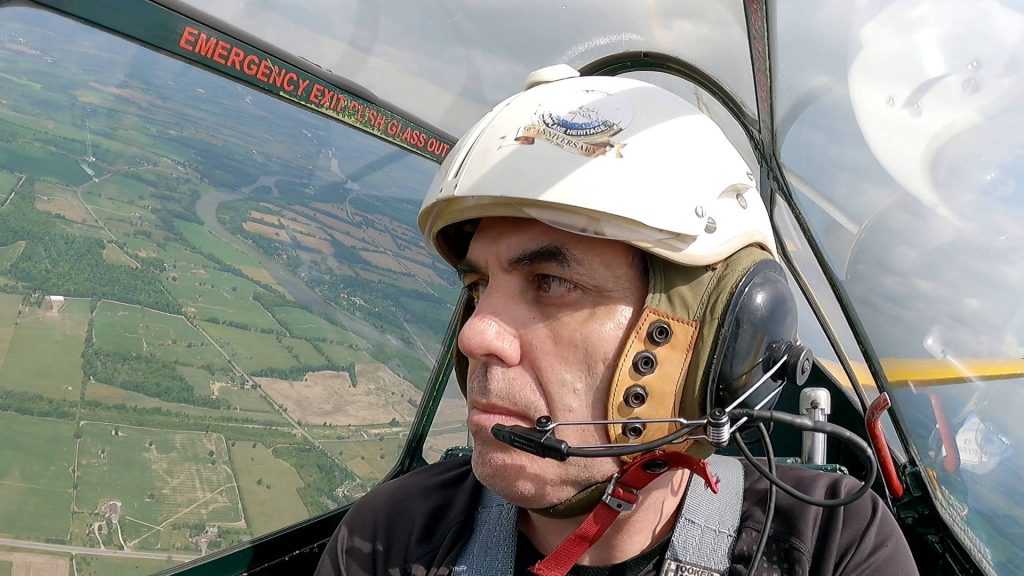Watch a video of my Harvard flight experience in Canadian Warplane Heritage Museum (John C. Munro Hamilton International Airport, CYHM)
Harvard flight experience – video
Chapters
- Engine start
- Taxiing
- Engine Run-Up
- A simple stick 🙂
- Take Off
- Passage over the museum
- Leaving airport’s terminal zone
- Steep turns
- Open the canopy
- Your turn the control
- I have the control or real Harvard flight experience!
- Decreasing altitude for the airport’s terminal zone
- Over the museum again
- Approaching
- Landing
- Sharing experience after the flight
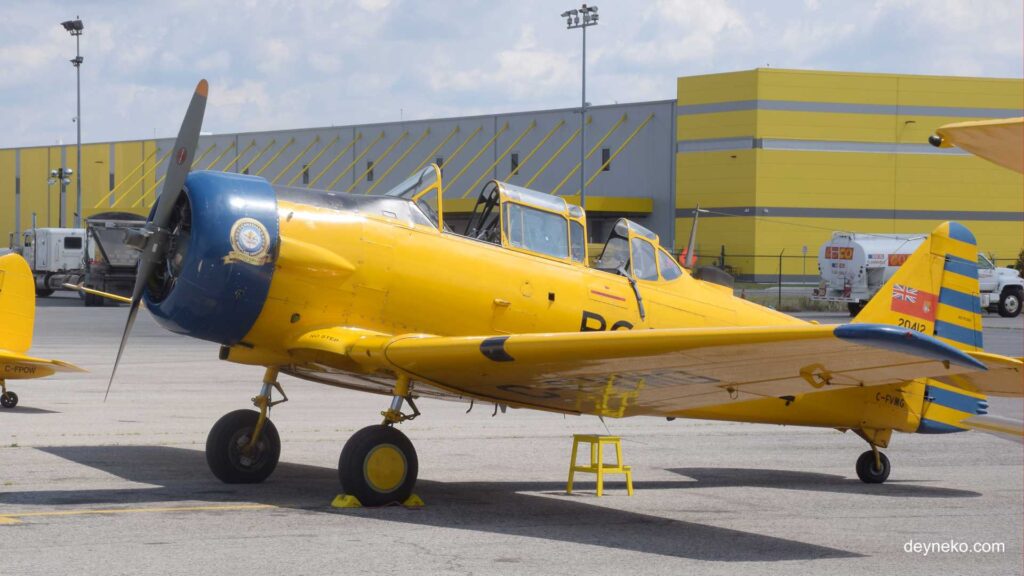
Why did I choose the North American Harvard Mk. IV for the flight?
I lived in Republic of Sakha (Yakutua) and was interested in ALSIB (Alaska-Siberian Lend-Lease route). During World War II ALSIB was used for ferrying American aircraft for soviet pilots. T-6 Texans, the analog of Harvard IV, were ferried on this route and was used as a military trainer.
When I lived in the Republic of Sakha (Yakutia), I was interested in the ferrying of combat aircraft during World War II from the USA to the USSR through Siberia along the ALSIB (Alaska-Siberian Lend-Lease route). The North American Harvard Mk. IV’s sibling, the Texan T-6, was also ferried as part of the Lend-Lease program. A total of 54 Texan T-6 aircraft were ferried along the ALSIB air route.
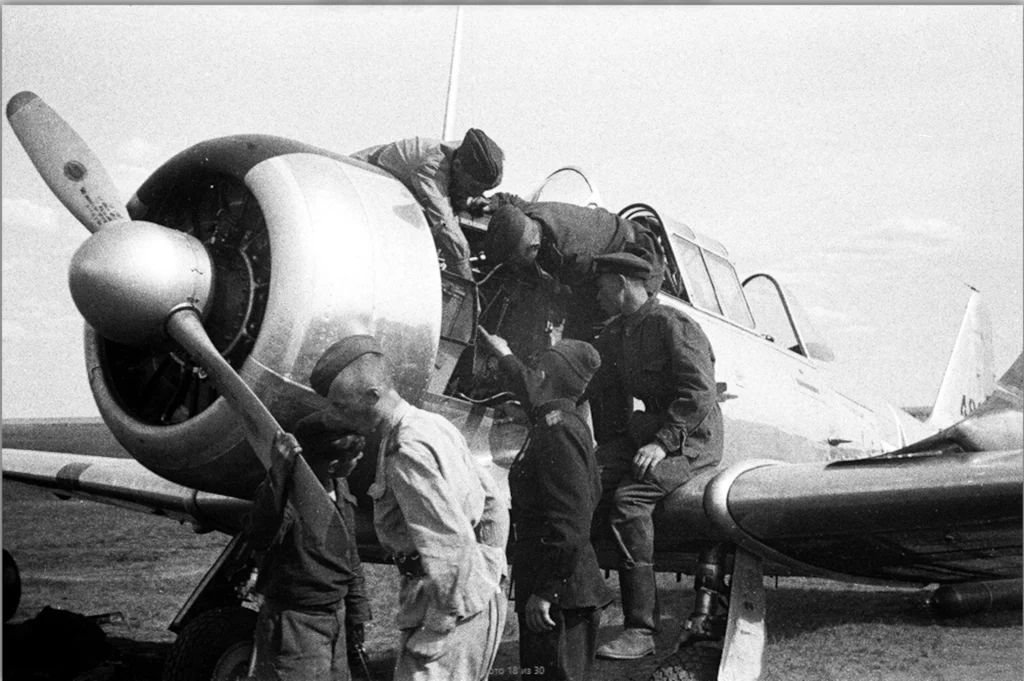
Soviet pilots used the North American T-6 Texan as a training aircraft. One of the aircraft underwent testing at the Scientific Research Institute of the Air Force. Colonel Yu.I. Shumov, the commander of the 6th Brigade, participated in the tests. The overall assessment of the AT-6C was quite high.
“The aircraft is easy to fly, has good longitudinal and lateral stability, and allows for all the maneuvers necessary for fighter-type aircraft: turns, combat turns, rolls, barrel rolls, Immelmanns, loops, and dives.”
From the official report
The aircraft was simple and convenient to operate. It was equipped with armament, allowing for air gunnery training. The navigation equipment enabled blind and night flight training.
The cockpit and equipment of the T-6 Texan were similar to those of American fighters. This facilitated pilot training for subsequent flights on American fighters, which were also supplied under Lend-Lease.
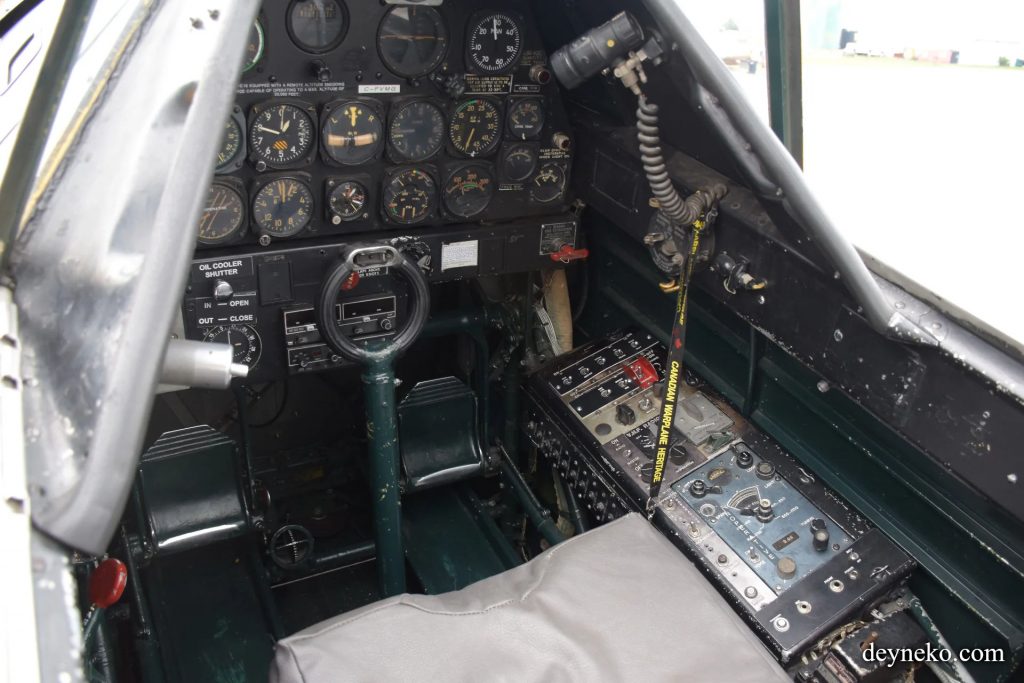
My goodness, how did they ferry the T-6 Texan over such a great distance?!
During the flight, I tried to imagine how the pilots who ferried these planes along the ALSIB route felt. I don’t even know how to express my emotions… This is not even a Cessna 172, which I am training to fly… The Harvard Mk. IV, like its sibling the Texan T-6, is absolutely not designed for long flights. Wind blows in from every gap, including where the canopy opens! There’s no heating! Not even minimal cabin insulation, just a thin aluminum skin. There’s no autopilot at all! The plane constantly veers from side to side and requires constant correction.

I want to give a special thanks to my support team and the “film crew” – my family!
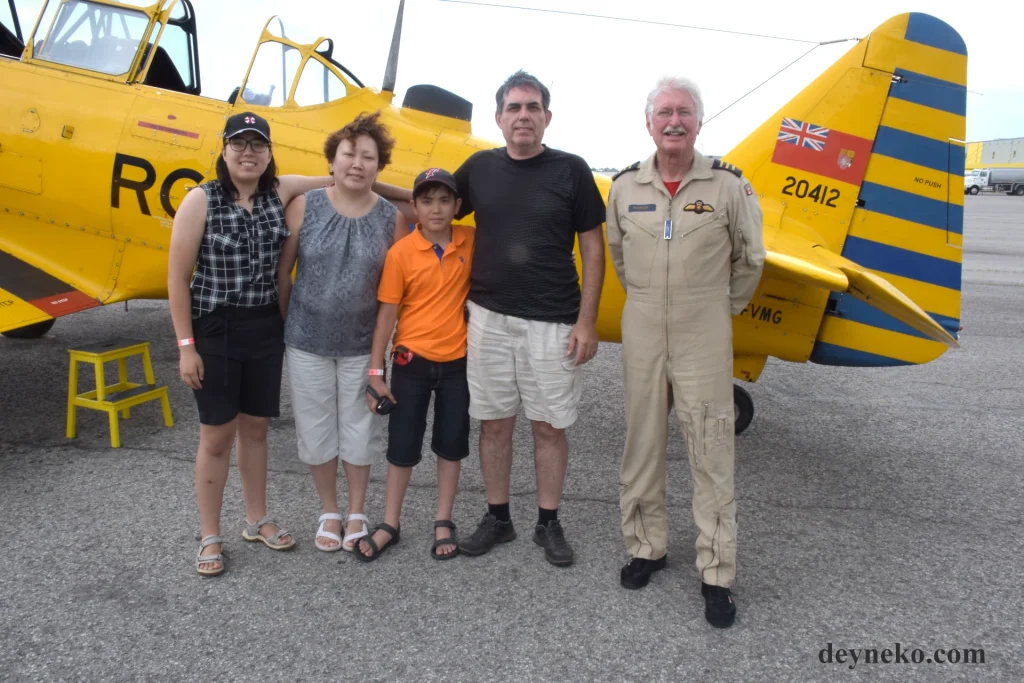
Pilot Andy Dobson (far right) and us – the Deyneko family left to right: Alice, Alexandra, Alain, Alexander
Without them, the video would have been very “simple.” The external camera filming was done by Alisa and Alen. Alen ran to the upper balcony of the museum to film the plane flying over the museum while it was taxiing for takeoff. After filming the landing approach, he ran back down the stairs while the plane was taxiing after landing. Alisa patiently filmed the engine start and taxiing, holding the camera without a tripod and barely breathing. Alexandra directed the film crew 🙂 Then we all edited everything into one video.
I want to express my immense gratitude to Mr. Andy Dobson, the pilot at the Canadian Warplane Heritage Museum, for allowing me to fly the plane and feel it – this is a real “Harvard flight experience!” Many thanks to the ground crew for their hard work and patience!
They all patiently waited and assisted while I connected and tested the intercom audio recording equipment, prepared the video equipment, and instructed the “family film crew.”
Canadian Warplane Heritage Museum – Official site
